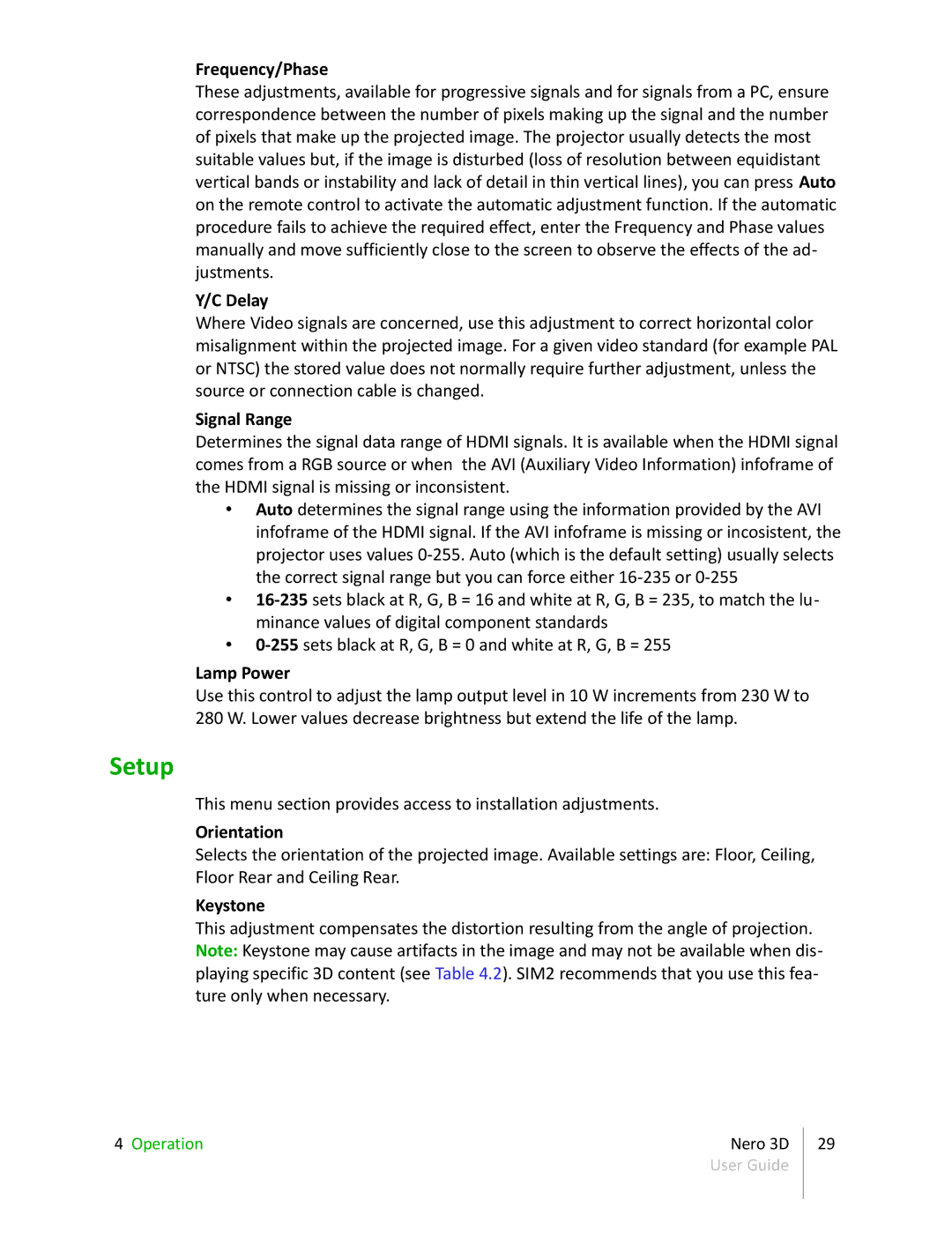Frequency/Phase
These adjustments, available for progressive signals and for signals from a PC, ensure correspondence between the number of pixels making up the signal and the number of pixels that make up the projected image. The projector usually detects the most suitable values but, if the image is disturbed (loss of resolution between equidistant vertical bands or instability and lack of detail in thin vertical lines), you can press Auto on the remote control to activate the automatic adjustment function. If the automatic procedure fails to achieve the required effect, enter the Frequency and Phase values manually and move sufficiently close to the screen to observe the effects of the ad- justments.
Y/C Delay
Where Video signals are concerned, use this adjustment to correct horizontal color misalignment within the projected image. For a given video standard (for example PAL or NTSC) the stored value does not normally require further adjustment, unless the source or connection cable is changed.
Signal Range
Determines the signal data range of HDMI signals. It is available when the HDMI signal comes from a RGB source or when the AVI (Auxiliary Video Information) infoframe of the HDMI signal is missing or inconsistent.
•Auto determines the signal range using the information provided by the AVI infoframe of the HDMI signal. If the AVI infoframe is missing or incosistent, the projector uses values
•
•
Lamp Power
Use this control to adjust the lamp output level in 10 W increments from 230 W to 280 W. Lower values decrease brightness but extend the life of the lamp.
Setup
This menu section provides access to installation adjustments.
Orientation
Selects the orientation of the projected image. Available settings are: Floor, Ceiling, Floor Rear and Ceiling Rear.
Keystone
This adjustment compensates the distortion resulting from the angle of projection. Note: Keystone may cause artifacts in the image and may not be available when dis- playing specific 3D content (see Table 4.2). SIM2 recommends that you use this fea- ture only when necessary.
4 Operation | Nero 3D | 29 |
| User Guide |
|
|
|
|
